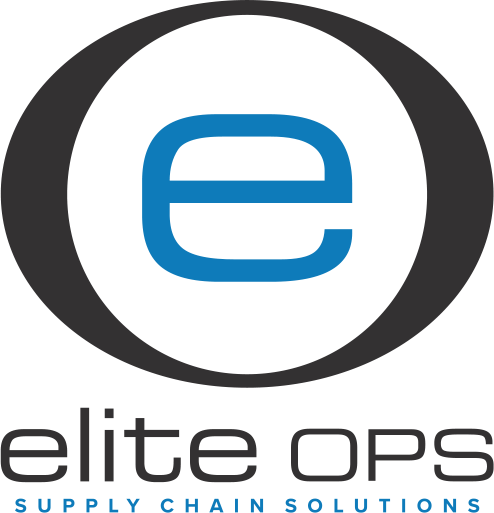Kitting and Assembly: What’s the Difference and When to Use Each?
In the world of manufacturing and order fulfillment, two processes play crucial roles: kitting and assembly, both integral to effective supply chain management. While they may seem similar at first glance, these methods serve distinct purposes and are best suited for different scenarios. Let’s dive into the key differences between kitting and assembly and explore when to use each approach.
What is Kitting?
Kitting is the process of grouping individual items or components into a single package, known as a “kit”. This kit is then treated as a single unit with its own unique SKU (Stock Keeping Unit). Kitting solutions are commonly used in retail, eCommerce, and certain manufacturing contexts, especially in ecommerce fulfillment where efficiency and accuracy are paramount.
Key characteristics of kitting:
Kitting is an essential preparatory process in manufacturing that organizes and packages related components together, focusing on the meticulous preparation, packaging, and organization of parts, influenced by strategic packaging strategies. By assembling all necessary items into a single, cohesive kit, kitting significantly speeds up the subsequent assembly phase by reducing search time and minimizing errors. This strategic approach ensures that everything needed is readily available, streamlining operations and enhancing efficiency. The result is a complete kit, meticulously curated to include all required parts, setting the stage for a smooth and effective assembly process with proper labeling to ensure easy identification of each component.
What is Assembly?
Assembly, on the other hand, is the process of combining individual components or parts through sub-assembly stages to create a finished product. This method is typically employed in manufacturing industries where complex products are built from numerous parts.
Key characteristics of assembly:
Assembly is a crucial process in manufacturing that combines components to create the final product, focusing on the physical construction and integration of parts. This meticulous process directly impacts the product’s quality and functionality, ensuring that each element fits seamlessly into the whole. The result is a fully constructed product, ready for use, embodying the precision and care invested in its creation. Through assembly, the vision of a product is transformed into a tangible reality, showcasing the harmony of its components working together as intended.
Key Differences Between Kitting and Assembly
- Purpose: Kitting groups items for convenience in inventory and shipping, resulting in significant cost savings, while assembly creates a finished product.
- Process: Kitting and assembly involve packaging items together and physically putting parts together in a manufacturing setting, respectively.
- Application: Kitting and fulfillment services are common in retail and eCommerce for order fulfillment, while assembly is used in manufacturing to produce finished goods.
- Complexity: Assembly can be more complex and structured, often requiring specialized skills and training.
- Inventory Management: Kitting reduces the need for large stocks of pre-assembled products, while assembly may require storing finished goods.
- Customization: Kitting offers more flexibility for customization, while assembly is better suited for standardized products.
- Lead Times: Assembly can provide shorter lead times for customer orders, as products are ready to ship immediately.

When to Use Kitting
Kitting is most practical in the following scenarios:
eCommerce and Retail
In the dynamic world of eCommerce and retail, kitting plays a pivotal role by bundling products that are often purchased together. This strategic approach not only enhances customer satisfaction by providing convenience but also encourages increased sales through bundled offerings. By anticipating customer needs and preferences, businesses can create value-added packaging that streamlines the purchasing process and fosters brand loyalty. This method of kitting ensures that customers receive a cohesive set of products, enhancing their overall shopping experience and driving repeat business.
Subscription Boxes
Subscription boxes have revolutionized the way consumers engage with brands, and kitting is at the heart of this innovation. By pre-assembling kits for monthly subscriptions, companies can deliver a curated experience that delights customers with new and exciting products each month. This approach not only simplifies the logistics of manufacturing, packaging strategies, and delivering a diverse range of items but also ensures consistency and quality in every box. The anticipation of receiving a thoughtfully assembled kit from a subscription eCommerce company keeps subscribers engaged and eager for their next delivery, solidifying long-term relationships with the brand.
Customization
In an era where personalization is paramount, kitting offers a powerful solution for businesses that prioritize a high level of product customization. By organizing and labeling components into customizable kits, companies can offer tailored solutions that meet individual customer preferences and specifications. This flexibility not only enhances customer satisfaction but also differentiates the brand in a competitive market by offering advanced kitting solutions. Kitting enables businesses to efficiently manage a wide array of options in the manufacturing process, ensuring that each product is uniquely suited to the customer’s needs and desires.
Limited Storage Space
For businesses operating with limited storage space, kitting provides an effective strategy in supply chain management and ecommerce fulfillment services to achieve cost savings by minimizing inventory costs and shipping costs, and reducing the risk of overstocking. By assembling kits on demand, companies can optimize their storage capabilities and maintain a lean inventory. This approach not only conserves valuable space but also enhances operational efficiency by ensuring that only necessary components are stocked. Kitting allows businesses to adapt quickly to changing demands, reducing waste and maximizing resource utilization.
Diverse Product Range
When dealing with a diverse product range and numerous possible configurations, kitting becomes an invaluable tool. It simplifies the complexity of managing multiple product variations within the manufacturing process by organizing components into cohesive kits. This method allows businesses to efficiently handle a wide array of options, ensuring that each configuration is readily available for sub-assembly or final assembly. By streamlining the process, kitting and assembly enhance operational efficiency and enable companies to meet customer demands with precision and agility, regardless of the complexity of their product offerings.
When to Use Assembly
Assembly is most practical in these situations:
Complex Products
In the realm of complex products such as electronics, machinery, and automobiles, manufacturing, packaging, and assembly are the cornerstones of transforming intricate designs into functional realities. This process involves the meticulous kitting and assembly of numerous components, each playing a vital role in the product’s overall performance and reliability. The assembly of complex products demands precision and expertise, with each sub-assembly ensuring that every part is correctly aligned and functioning as intended. By focusing on the seamless construction of these sophisticated items, businesses can deliver high-quality products that meet the rigorous demands of modern consumers.
High-Volume Production
Assembly is particularly advantageous in high-volume production scenarios, where demand is stable and predictable. This environment allows for efficient mass production in manufacturing, optimizing resources and reducing costs. By streamlining the assembly process, companies can achieve economies of scale, producing large quantities of products with consistent quality and efficiency, resulting in significant cost savings and minimizing shipping costs. This approach not only meets market demand but also enhances profitability, enabling businesses to maintain a competitive edge in industries characterized by high-volume requirements.
Standardization
For products that require consistency, standardization, and precise manufacturing to appeal to the mass market, assembly is an essential process. It ensures that each unit produced adheres to the same specifications and quality standards, fostering consumer trust and brand reliability. Through standardized assembly procedures, companies can deliver uniform products that meet customer expectations, reinforcing their reputation for quality and dependability. This consistency is crucial in building brand loyalty and sustaining long-term success in competitive markets.
Quality Control
In industries where ensuring each product meets specific standards before shipping is crucial, assembly and packaging strategies play a pivotal role in quality control. By integrating rigorous inspection, labeling, and testing protocols into the assembly process, businesses can identify and rectify any issues before products reach the market. This proactive approach not only safeguards the brand’s reputation but also enhances customer satisfaction by delivering reliable and defect-free products. Assembly-driven quality control is a testament to a company’s commitment to excellence and its dedication to meeting the highest industry standards.
Shorter Lead Times
In industries where quick delivery is essential to customer satisfaction, assembly is instrumental in achieving shorter lead times. By optimizing the assembly process, companies can expedite production and reduce the time from order to delivery. This agility is crucial in meeting the fast-paced demands of today’s consumers, who expect prompt service and immediate access to products. Through efficient assembly practices, businesses can enhance their responsiveness, ensuring that they remain competitive and relevant in a rapidly evolving marketplace.

Bottom Line
Both kitting solutions and assembly, along with effective fulfillment services, supply chain, and ecommerce fulfillment management, have their place in modern manufacturing and order fulfillment processes. The choice between the two depends on factors such as product complexity, customization requirements, inventory management needs, and production volumes. By understanding the strengths of each approach, businesses can optimize their operations, reduce costs, and improve customer satisfaction.
Whether you opt for kitting, assembly, or a combination of both, the key is to align your choice with your business model, market demands, and strategic goals. As industries continue to evolve, the flexibility to adapt and implement the most suitable processes will be crucial for staying competitive in the global marketplace.
An external fulfillment service partner like Elite OPS is responsible for picking, packing, and shipping orders. Consider such a strategy to reduce shipping and operational costs.
Elite OPS has been a leader in Shipping and Logistics for over 25 years. Contact Us to find out how we can help you Save Time and Money on Procurement as a Service, eCommerce Order Fulfillment, and Kitting and Assembly.
Call 855-553-5490 or Click Here to Request a Quote!
FAQs – Kitting and Assembly
In the realms of manufacturing and order fulfillment, kitting and assembly play pivotal roles in streamlining complex processes. Here are some frequently asked questions to help clarify their differences and best uses.
What is the main difference between kitting and assembly?
Kitting involves packaging related items together for convenience, while assembly combines components to create finished products.
When should kitting be used?
Use kitting for ecommerce, subscription boxes, customization, and managing diverse product ranges or limited storage space.
What products benefit most from assembly?
Products with high complexity, needing standardization, quality control, and those produced in high volumes benefit most from assembly.
How does kitting aid in customization?
Kitting allows grouping customizable components, enabling consumers to tailor products according to their preferences.
Can kitting reduce lead times?
Yes, by preparing items well in advance, kitting can minimize retrieval and preparation time, leading to quicker order processing.
Why is assembly crucial for quality control?
Assembly allows for rigorous inspection and testing, ensuring each product meets specified standards before reaching the customer.
Which process is better for high-volume production?
Assembly is particularly advantageous for high-volume production, optimizing efficiency, and reducing costs through standardization.
How does a business choose between kitting and assembly?
Consider product complexity, customization needs, inventory management, and production volume to determine the best approach.







